Dr David S. Frey has been in private practice in Beverly Hills, CA, USA, for more than 20 years. His passion for learning and excellence has allowed him to establish a very high-end cosmetic and reconstructive practice. In an interview with Dental Tribune, he discusses being a ‘mouth doctor.’
You were the first dentist to use and exploit the term ‘full-mouth revitalization,’ and you commonly refer to yourself as a ‘mouth doctor.’ What does all this mean?
I did a Google search of the term ‘full-mouth revitalization’ when I was writing my book, Revitalize Your Mouth, in 2004, and nothing showed up. Thus, I am now the proud owner of that trademark for my signature procedure.
What I mean by ‘mouth doctor’ is that I can be one of three types of dentists for my patients: a tooth doctor, a smile doctor or a mouth doctor. Some dentists are tooth doctors, some are both tooth and smile doctors and others, like me, enjoy being a mouth doctor.
A mouth doctor is comprehensive: correcting the teeth, the smile and the bite. Correcting the bite can enhance so much more for the patient than merely restoring the teeth in the patient’s current habitual position. Patients can look healthier and more attractive if you proportionalize the lower one-third of the face.
Correcting the bite can also miraculously alleviate headaches, ear pain, jaw pain and muscle pain in the neck. It can even improve posture. In my experience, most patients with unattractive smiles got that way because of their malocclusion.
The bite is the engineering, backbone and foundation behind a beautiful smile, and by taking a full-mouth approach; the gorgeous smile that you create will stay that way for a long time and look better than ever!
Why is it important to correct a patient’s bite?
If you build patients’ smile in their habitual bite, you’re confined to the size to which they’ve worn their teeth down. This is a very small area. When you incorporate bite correction into your work on a patient’s smile, you have a lot more power, and you can correct vertical abnormalities. If you just treat the smile, you’re very limited to horizontal abnormalities such as gaps, spaces and crooked teeth.
When a patient only wants four teeth corrected in the middle of the smile, I become a tooth doctor. But only correcting those four teeth compromises color and the natural flow of the smile as it diminishes into the corners of the lips.
Of course, the choice is always the patient’s, and that means I have to be able to be a tooth doctor, a smile doctor, and a mouth doctor in order to serve all of my patients.
However, the truth is that form equals function, and art equals science. Without combining the two, you can never make an incredibly gorgeous smile.
When the bite has been corrected or when I treat a patient with a healthy bite, I can create the best smile in the world because I can line it up in proportion with the patient’s face.
Would you tell me about the books you authored, Revitalize Your Mouth and Revitalize Your Smile?
The books were written to explain to patients everything they need to know about a full-mouth or full-smile revitalization. Because this procedure is very complex and detailed, these books have been very successful for my practice because they’re easy to read and contain several before and after pictures.
Patients show them to other potential patients, so they’ve been very strong internal marketing tools.
It’s also easy for me to share these books with other dentists. I allow them to co-write my books by adding their own before and after pictures so that they can enjoy the marketing success that I’ve had. I call this the Instant Author Program [www.instantauthorprogram].
Your office is in Beverly Hills, where many people are known to get frequent cosmetic procedures. Do you find that injections in the face and lips — such as Botox, restylane and collagen — cause problems with a patient’s smile?
Yes. Women often enlarge the size of their lips to the point of sacrificing their smiles. So when they smile, they no longer show much of their teeth.
In that case, these injections can create a vertical abnormality. If they want to show more teeth, they need to open the vertical dimension in their bites.
We must open the bite up so that when they close their mouth, the top and bottom teeth touch sooner. That allows more of the teeth to show and gives the dentist room to make a larger central that peers through the lips and gives the patient a more youthful smile.
Not showing enough teeth is the opposite problem of what you call a gummy smile, correct?
Yes, a gummy smile is the opposite vertical abnormality. With a gummy smile, the patient shows too much of the teeth and gums. These patients often have a very small vertical dimension, 13 to 14 millimeters.
By opening them up to their natural physiological vertical length, which might be closer to 17 millimeters, they show more teeth and less gum as the ratio between the gums and teeth is reversed. By opening the bite, you can also reduce gummy smiles, as my article [in this edition] illustrates.
What kind of patient would you consider a good candidate for what you call full-mouth revitalization?
People who have had lots of dentistry in the past or worn their teeth down, as well as people who don’t like their smile and want veneers on the top and bottom teeth. If you’re going to veneer 20 teeth, the only remaining teeth are molars.
Many of these patients already have amalgam fillings or crowns on these teeth. So it only makes sense to do the full-mouth with a corrected bite on these patients.
If you fail to correct the bite, you also fail to address the core problem of why so much dentistry is already in the patient’s mouth. By leaving the patient in his or her habitual bite, that patient is going to continue to have the same problems he or she has had for the past 30 years or more.
However, by creating a harmonious environment between the temporal mandibular joint, the teeth and the muscles of mastication, you can achieve beautiful and long-lasting restorations.
Are there patients who aren’t good candidates for full-mouth revitalization?
Yes. There are times when it makes sense to be a tooth or smile doctor. Someone who has all virgin teeth without any cavities or someone with a vertical dimension of 17 to 21 millimeters with no history of neuromuscular symptoms wouldn’t require full-mouth revitalization.
The same can be said for someone who is very young and open to the idea of orthodontics. If someone’s natural teeth are in the proper shape, size and contour without any contortions, they don’t require a full- mouth approach.
Do your patients often ask you to fix a tooth and then end up going for the full-mouth approach?
Yes, sometimes it’s important for a patient to understand why his or her teeth are fracturing and decaying. Teeth restored back into the patient’s habitual bite may be very limiting.
Again, it’s always the patients’ choice, but I want them to make a very informed choice.
I have a patient now who is dissatisfied with his previous dentist. He struggled with three teeth on the bottom right where he was given three porcelain-fused-to-metal crowns.
His bite is so tough and so limited in the back molars that after his bite was adjusted many times, he can now see the metal on his crowns.
So I explained to him that I could redo the crowns, but he will have the same problem because his teeth are very flat and worn down with a lot of old dentistry.
I showed him how full-mouth revitalization will open his bite and allow the necessary room to restore his teeth. Without this, he will continue to wear down his teeth.
Thank you for this interview!
Contact info
You may contact Dr David S. Frey at drfrey@drfreydds.com.
In performing long-lasting comprehensive dentistry, form, function, esthetics and stability are the attributes that we strive for and should for good ...
Full-arch implant-supported reconstruction continues to provide viable solutions to restore and improve function, enhance aesthetics and change quality of ...
The American Academy of Implant Dentistry recently announced the release of the first benchmarking study for the implant dentistry practice in the United ...
NEW YORK, N.Y., USA: Researchers at the Dental Institute at King’s College London say they’re a step closer to growing human teeth in the lab ...
With HealthyStart, a comprehensive pediatric airway system, you can start young patients on the pathway to better health. You have spent many hours ...
A newcomer with an interesting story emerged on the U.S. implant scene last fall during the global pandemic. Ditron Dental USA, the U.S. affiliate of Ditron...
Artificial intelligence (AI) in dentistry has started to bloom in recent years. From a dental perspective, applications of AI can be classified into ...
Most of us know that proper brushing with toothpaste containing fluoride is the first step in maintaining healthy teeth and gums. Despite this, ...
KRIENS, Switzerland: According to World Health Organization data, almost 45% of the global population has some form of oral disease. For people with a ...
CHICAGO, Ill., USA: Already known across the globe for its handpieces, KaVo used the Midwinter Meeting as the first major tradeshow to feature its newly ...
Live webinar
Wed. 14 January 2026
12:00 PM EST (New York)
Dr. Théo Laplane, Dr. Robert Gottlander DDS
Live webinar
Fri. 16 January 2026
12:00 PM EST (New York)
Live webinar
Mon. 19 January 2026
1:00 PM EST (New York)
Philipp Kopp, Michael Seeber
Live webinar
Thu. 22 January 2026
9:00 AM EST (New York)
Prof. Judith Jones D.D.S; M.P.H., Prof. Kakuhiro Fukai D.D.S., Ph.D, Dr. Bathsheba (Bethy) Turton
Live webinar
Thu. 22 January 2026
2:00 PM EST (New York)
Dr. Nicola M. Grande DDS, PhD
Live webinar
Wed. 28 January 2026
8:00 AM EST (New York)
Live webinar
Wed. 28 January 2026
11:00 AM EST (New York)
Prof. Dr. Jan-Frederik Güth



 Austria / Österreich
Austria / Österreich
 Bosnia and Herzegovina / Босна и Херцеговина
Bosnia and Herzegovina / Босна и Херцеговина
 Bulgaria / България
Bulgaria / България
 Croatia / Hrvatska
Croatia / Hrvatska
 Czech Republic & Slovakia / Česká republika & Slovensko
Czech Republic & Slovakia / Česká republika & Slovensko
 France / France
France / France
 Germany / Deutschland
Germany / Deutschland
 Greece / ΕΛΛΑΔΑ
Greece / ΕΛΛΑΔΑ
 Hungary / Hungary
Hungary / Hungary
 Italy / Italia
Italy / Italia
 Netherlands / Nederland
Netherlands / Nederland
 Nordic / Nordic
Nordic / Nordic
 Poland / Polska
Poland / Polska
 Portugal / Portugal
Portugal / Portugal
 Romania & Moldova / România & Moldova
Romania & Moldova / România & Moldova
 Slovenia / Slovenija
Slovenia / Slovenija
 Serbia & Montenegro / Србија и Црна Гора
Serbia & Montenegro / Србија и Црна Гора
 Spain / España
Spain / España
 Switzerland / Schweiz
Switzerland / Schweiz
 Turkey / Türkiye
Turkey / Türkiye
 UK & Ireland / UK & Ireland
UK & Ireland / UK & Ireland
 International / International
International / International
 Brazil / Brasil
Brazil / Brasil
 Canada / Canada
Canada / Canada
 Latin America / Latinoamérica
Latin America / Latinoamérica
 China / 中国
China / 中国
 India / भारत गणराज्य
India / भारत गणराज्य
 Pakistan / Pākistān
Pakistan / Pākistān
 Vietnam / Việt Nam
Vietnam / Việt Nam
 ASEAN / ASEAN
ASEAN / ASEAN
 Israel / מְדִינַת יִשְׂרָאֵל
Israel / מְדִינַת יִשְׂרָאֵל
 Algeria, Morocco & Tunisia / الجزائر والمغرب وتونس
Algeria, Morocco & Tunisia / الجزائر والمغرب وتونس
 Middle East / Middle East
Middle East / Middle East














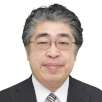















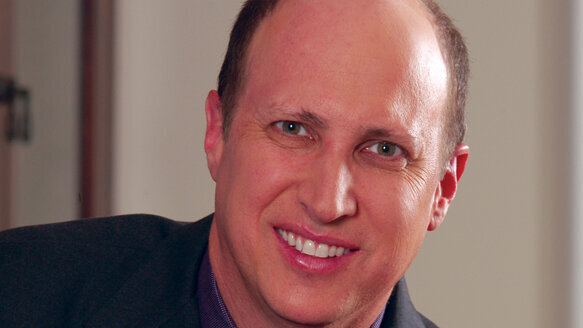



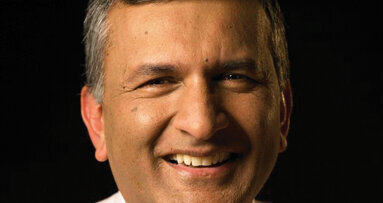
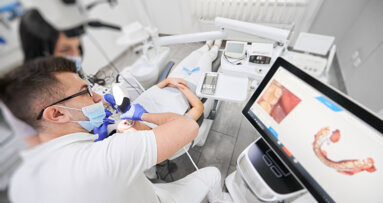
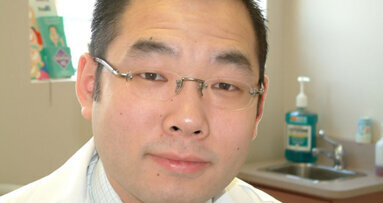

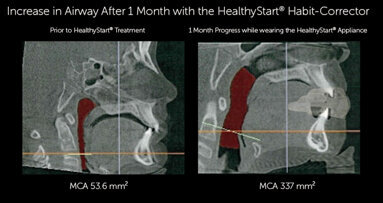
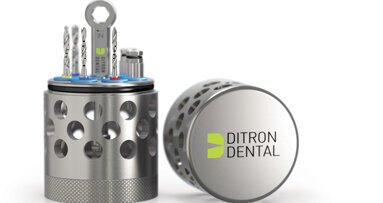

![Towards a healthy mouth with [BE YOU.] Towards a healthy mouth with [BE YOU.]](https://cdn.dental-tribune.com/dti//0001/b96fc066/cmVzaXplLWNyb3Aodz0zODM7aD0yMDMpOnNoYXJwZW4obGV2ZWw9MCk6b3V0cHV0KGZvcm1hdD1qcGVnKQ/up/dt/2018/05/Overview_Design3-1.jpg)

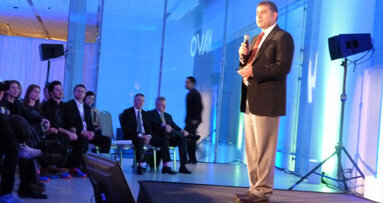

















To post a reply please login or register